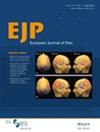Exploring signs of central sensitization in adolescents with hypermobility Spectrum disorder or hypermobile Ehlers-Danlos syndrome
Abstract
Background
Hypermobility Spectrum Disorder (HSD) and Hypermobile Ehlers-Danlos Syndrome (hEDS) are two overlapping heritable connective tissue disorders characterized by joint hypermobility, chronic pain, impaired body perception, and musculoskeletal symptoms. Central sensitization has been proposed as a plausible explanation for symptoms like widespread pain, fatigue, mood disorders, and sleep disturbances in patients with HSD/hEDS.
Objective
The aim of this study was to investigate signs of central sensitization, including exercise-induced hypoalgesia (EIH), and fatigue severity in adolescents with HSD/hEDS.
Methods
In this prospective, experimental, case–control study, thirty-seven adolescents with HSD/hEDS and 47 healthy adolescents (all aged 13–17 years) were included. Pressure pain thresholds (PPTs) were measured at four muscle groups using a pressure algometer. EIH was evaluated by measuring PPTs on two muscle groups immediately after an exercise test on a bicycle ergometer. Participants also completed questionnaires on fatigue and cognitive/emotional factors.
Results
The study demonstrated significantly lower PPTs in four different muscle groups in adolescents with HSD/hEDS compared to the healthy control group. Both groups achieved a significantly higher PPTs after exercise in the muscle involved in the activity. Adolescents with HSD/hEDS reported higher fatigue levels and more cognitive/emotional difficulties than the control group.
Conclusion
Adolescents with HSD/hEDS showed generalized hyperalgesia measured through PPTs at different body sites. EIH was partly affected in adolescents with HSD/hEDS, presenting as unchanged pain sensitivity in the remote muscle. Pain should be considered as a phenomenon that is influenced by different biopsychosocial factors, including possible central sensitization, which increase its complexity.
Significance statement
This study breaks new ground by showing signs of central sensitization, including diminished EIH, in adolescents with HSD or hEDS. Given that exercise is a key element in pain management, these findings offer valuable insights when developing treatment plans for adolescents with HSD or hEDS.


 求助内容:
求助内容: 应助结果提醒方式:
应助结果提醒方式:


